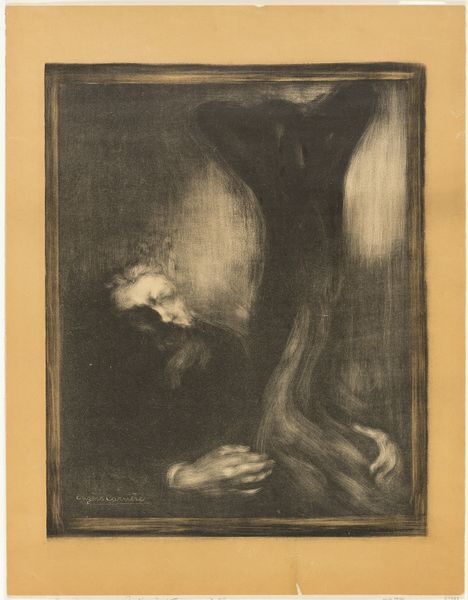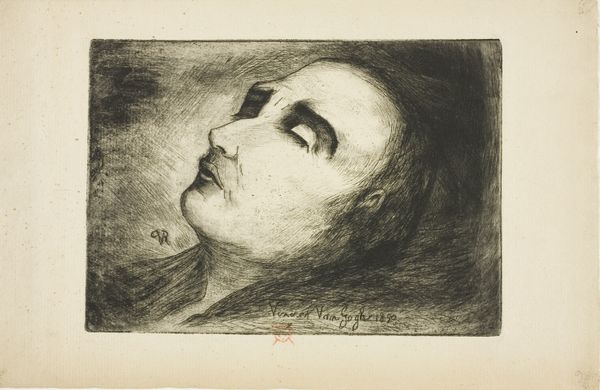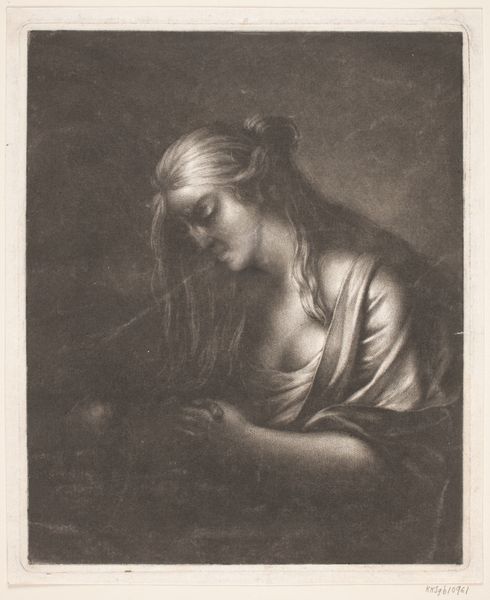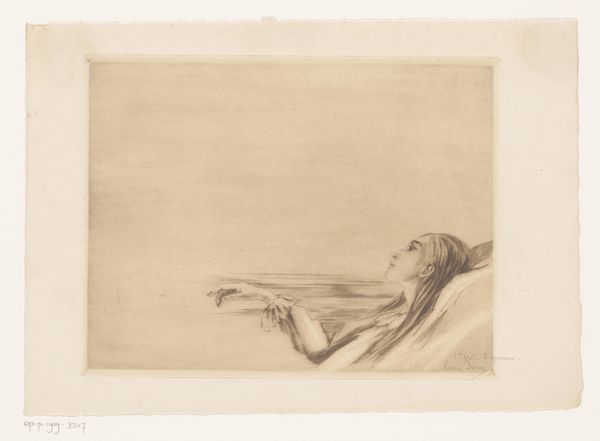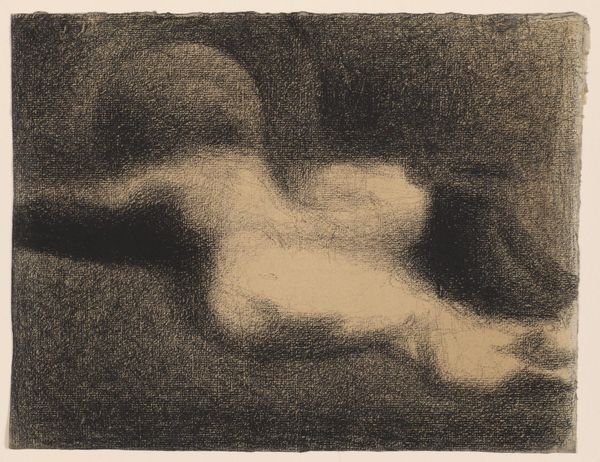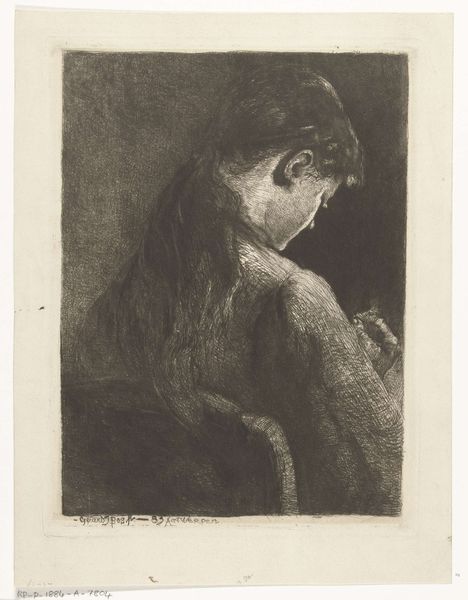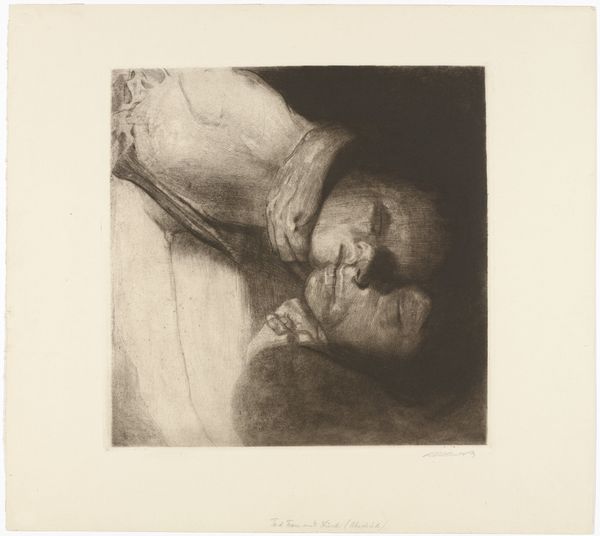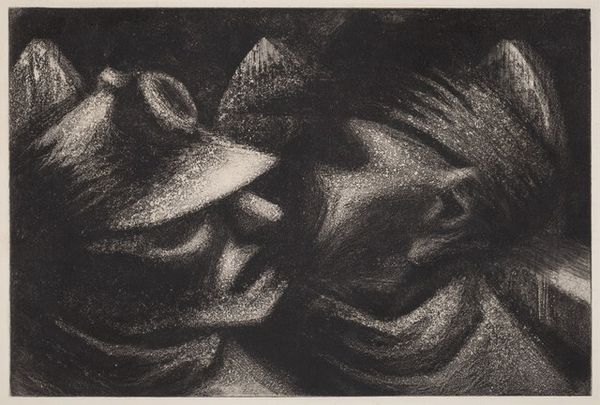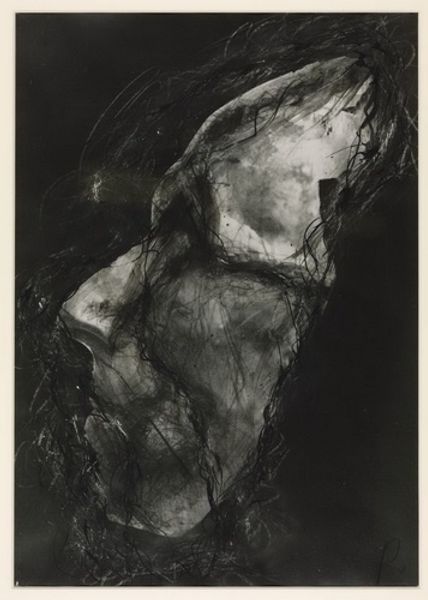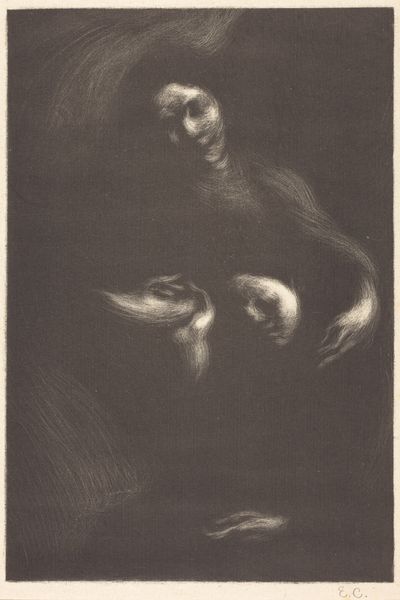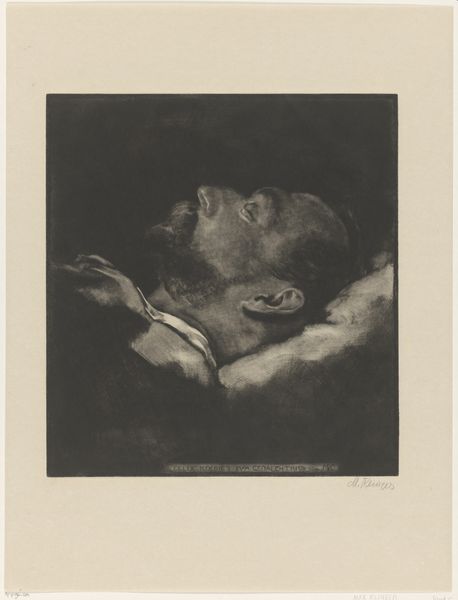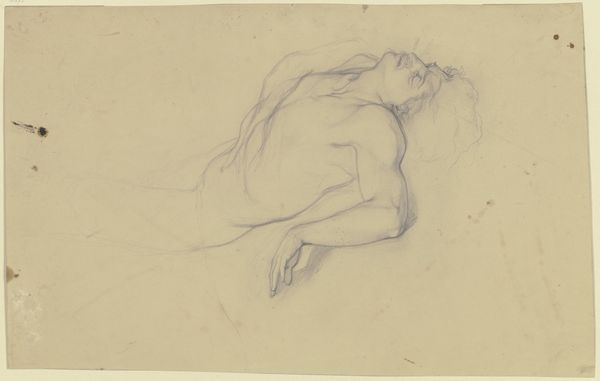
drawing, print, pastel
#
portrait
#
drawing
#
self-portrait
# print
#
symbolism
#
portrait drawing
#
pastel
#
portrait art
#
monochrome
Copyright: National Gallery of Art: CC0 1.0
Editor: This is Eugene Carriere’s "Sleep," a pastel drawing from 1897. There’s something very intimate and somber about it, almost dreamlike, the figure blending into the darkness. What strikes you when you look at it? Curator: What I see is the materiality, the labor inherent in the creation. Notice how the artist uses pastel to create an almost photographic effect, but one rooted in hand-made production. Carriere, working at the cusp of mechanical reproduction, deliberately employs a laborious process. Editor: So, you are saying he chooses pastel for a reason, even when photography existed? Curator: Exactly. Consider the context. The rise of photography threatened the traditional role of portraiture, and arguably all the "fine arts" by de-skilling visual reproduction. But Carriere isn’t just making an image, he’s making a *handmade* image. A process imbued with meaning. How does that tactile process change the way we view a traditional subject like sleep? Editor: That makes me think about sleep as labor too – or the lack thereof, particularly considering who might have had the luxury of restful sleep during the late 19th century. And the portrait itself then becomes an object tied to social class. Curator: Precisely! Carriere, through his deliberate choice of material and technique, invites us to consider not only the image, but also the material conditions and societal structures within which it was produced and viewed. What did artmaking, and seeing a handcrafted drawing instead of a photo, mean to the artist and his patron at that historical moment? Editor: That gives me so much to think about—not just the image but the social value imbued in making the image using pastel, and who was able to do so. It definitely makes this piece even more layered for me. Curator: Indeed. By focusing on the materials and means of production, we gain a richer understanding of the artwork’s cultural significance and how it reflects the broader social landscape.
Comments
No comments
Be the first to comment and join the conversation on the ultimate creative platform.
